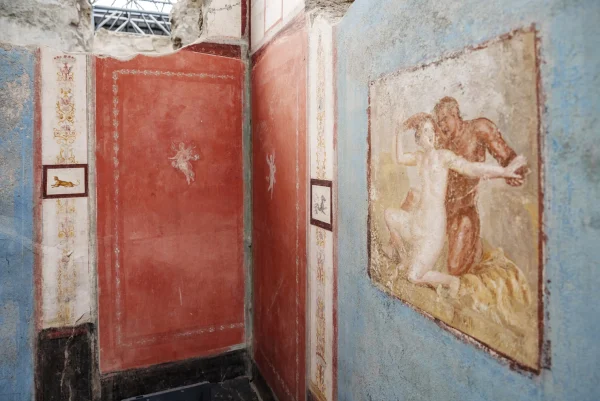Archeologists have discovered a small house in the ruins of the former city of Pompeii almost 2,000 years after the city was buried by a volcanic eruption from the nearby Mt. Vesuvius in 79 A.D. (Czachor, Oct. 27th).
The house had many interesting building styles. Normally, Pompeii houses had open-air atriums. The discovered house didn’t feature one. Archeologists said that the missing atrium likely had to do with a shift in architectural styles. Leaning away from atriums and towards halls and open courtyards (Musto, Oct. 30).
In an interview with the London Times , Gabriel Zuchtriegel, the director of the site, said “The atrium was associated with rich Romans receiving their clients and supporters and as a place to display family heirlooms, but as Rome entered the second century AD, many freed slaves and merchants of humble origin were achieving social status while old money was slipping. More than an atrium, it was clothes and jewels that were beginning to show status. Having no atrium was starting to be a choice, and we see that trend emerging at Pompeii.” (Kington, Oct. 24).
The house was also notable for the large amount of art on the house’s walls.

Along with the art, several items used in rituals were also found in the house, such as a ceramic container used to burn incense, along with a lamp, an iron knife, and parts of a dried fig.
The newly discovered house has been given the name “House of Phaedra.” It was named after one of its many well preserved paintings (Anderson, Oct. 28th).








